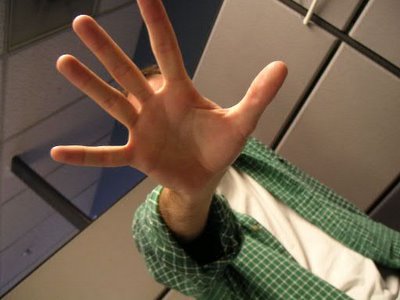When I first arrived in San Francisco, I'll admit I spent a lot of time wandering around in wide-eyed wonder. I've never been much of a city kid, so some of my awe was just related to the sheer volume of stuff to do and see and feel part of. But I was soon caught up not only in the excitement of the tech boom, but in all of the optimistic mad dash forward - that enthusiastic progressive sometimes-sanctimonious radical seismic spirit of San Francisco. And, in a world that is often rushing forward headfirst, anniversaries such as this whole earthquake thing are good opportunities to pause and reflect on where we came from to help better understand the lessons we should take with us into the future.  100 years ago, San Francisco had well over 400,000 residents -- all the more remarkable because a scant 60 years prior, it consisted of little more than a Spanish mission and fewer than 1000 inhabitants, including the Americans who were trickling in despite the war with Mexico. The population grew 25-fold in little more than a year after the discovery of gold in the Sierras. The hulls of ships, abandoned at the docks as their crews headed to gold country were built over, silted in, and underlie parts of the Financial District where, at the turn of the century skyscrapers designed by famous architects were popping up to rival downtown Chicago.
100 years ago, San Francisco had well over 400,000 residents -- all the more remarkable because a scant 60 years prior, it consisted of little more than a Spanish mission and fewer than 1000 inhabitants, including the Americans who were trickling in despite the war with Mexico. The population grew 25-fold in little more than a year after the discovery of gold in the Sierras. The hulls of ships, abandoned at the docks as their crews headed to gold country were built over, silted in, and underlie parts of the Financial District where, at the turn of the century skyscrapers designed by famous architects were popping up to rival downtown Chicago.
By 1906, San Francisco was the 9th largest city in the country and the largest west of St. Louis. It had the most important port on the West Coast, one of the busiest ferry terminals in the world, one-third of the nation's gold in the vaults of the Mint, and both the biggest department store and largest public building (City Hall) west of Chicago. Cable cars climbed the hills and martinis were in vogue - both local innovations. The opera houses and theaters were filled with citizens in their finery. The Palace Hotel was considered one of the most luxurious in the world and the Fairmont, gleaming white atop Nob Hill was just weeks from opening. Also atop Nob Hill perched ornate and fantastic mansions built by the Silver Barons, while the surrounding city was crowded with only somewhat more modest Victorian homes, built side-by-side, often sharing walls and largely constructed of the still-abundant local redwood.
The city also still had a ribauld and darker side. Though the Chinatown was the most populated outside of Asia, it was rife with prejudice, some of which was legislated. The Barbary Coast was crowded with bordellos, dance halls, saloons and opium dens, and men were still being shanghaied on the docks. The slot machine was a popular new local invention. It was widely recognized that the city government was corrupt. The South of Market area was filled with factories, foundries, warehouses and the homes of the rough and tumble working stiffs.
So what was once an expanse of flea-infested sand dunes, rocky hills and soggy salt marshes, had become a thriving bustling booming metropolis. The city exuded a fiery enthusiasm: born of such humble beginnings and stoked by the fires of gold, silver and trade, no resident doubted their home would soon rival Paris in its cosmopolitan splendor. And despite a history of tremblors, in their own great rush forward, few people could have imagined it would be all but gone in a matter of days.
Sunday, April 16, 2006
Great Expectations
Posted by Zach at 11:17 PM
Subscribe to:
Post Comments (Atom)

0 Comments:
Post a Comment